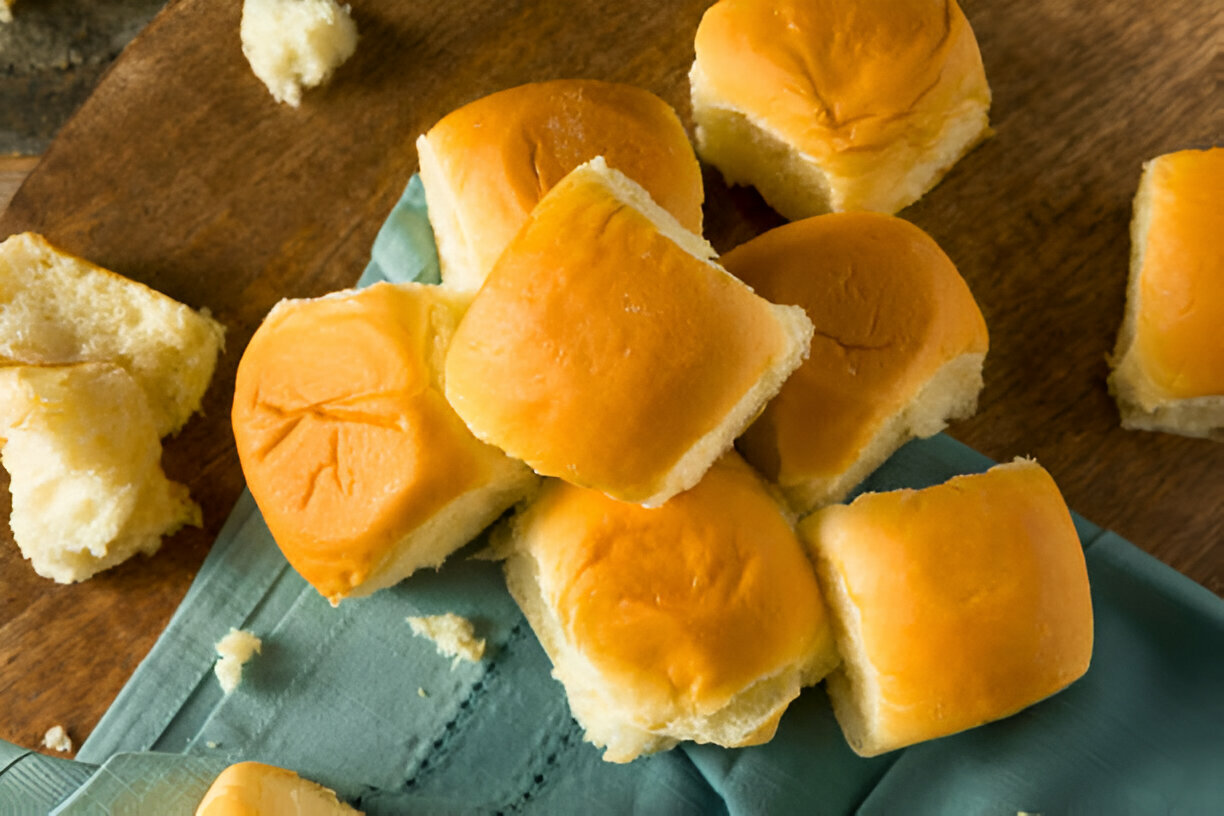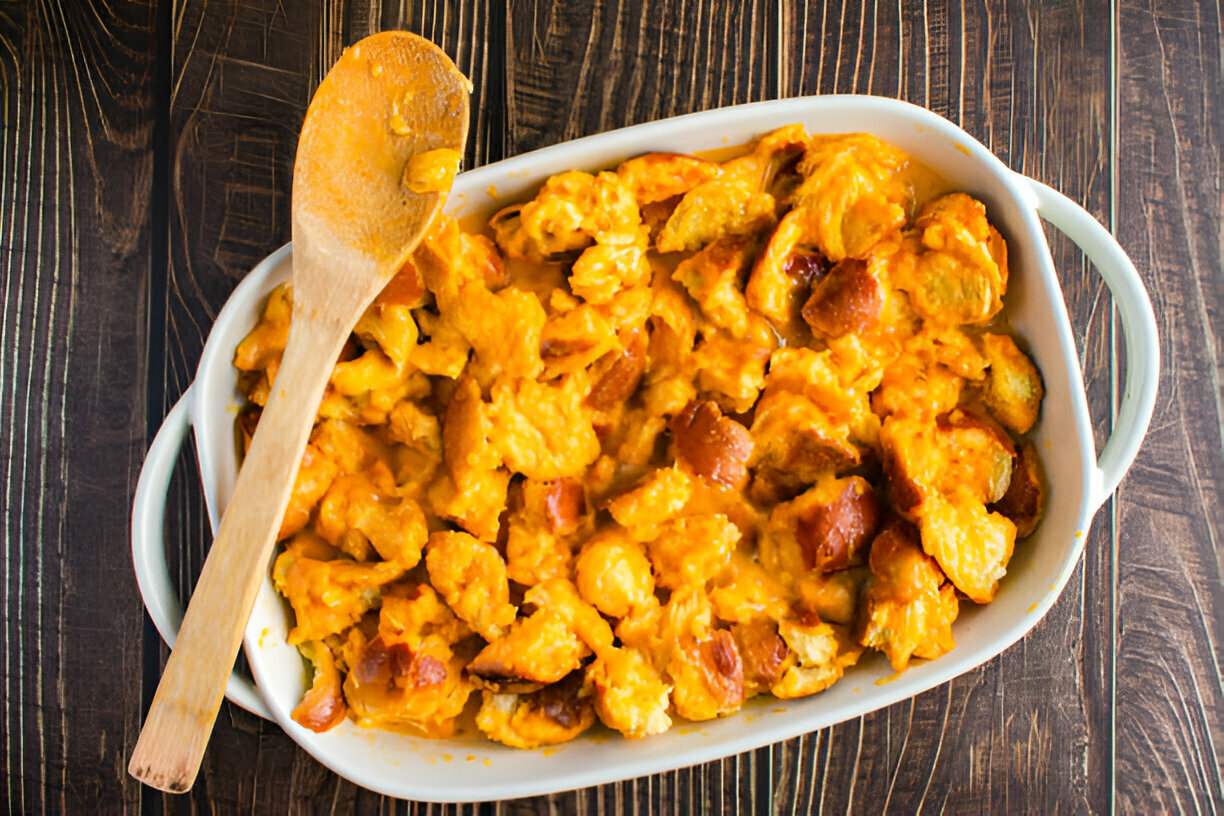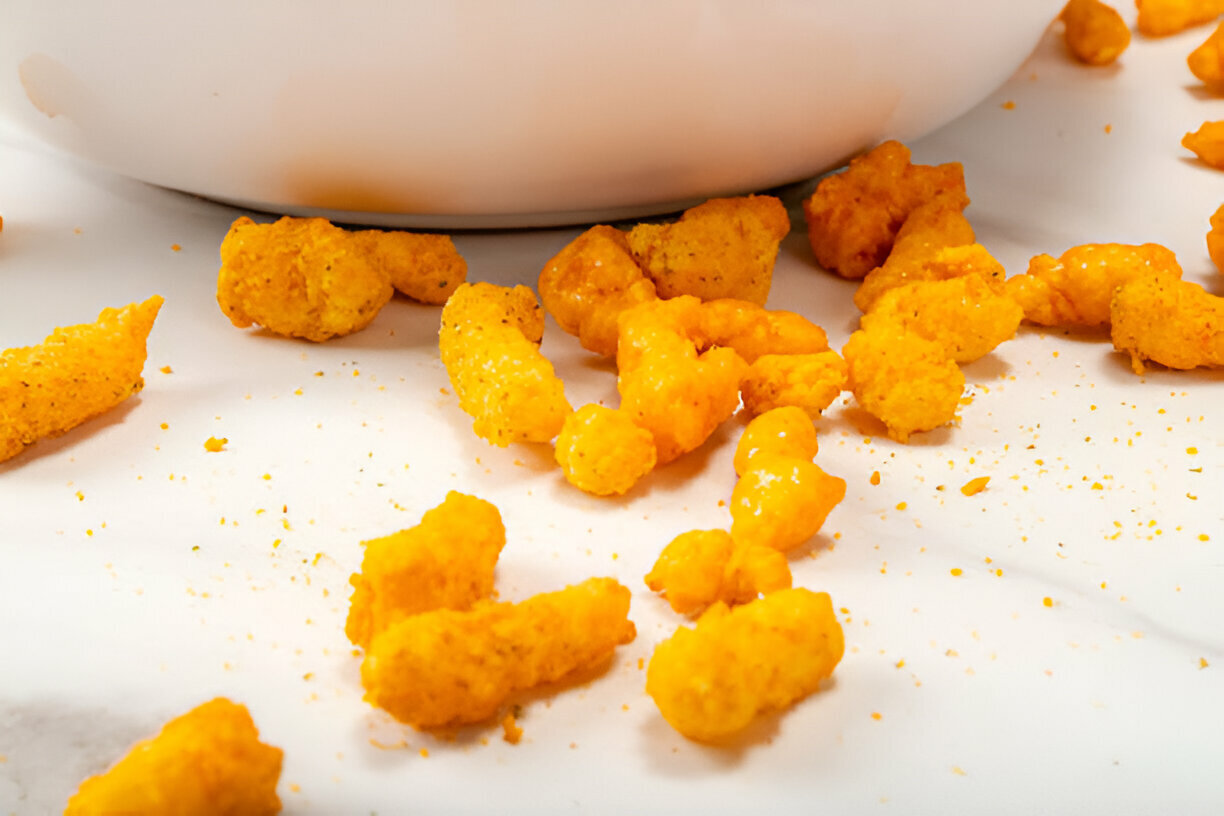Chicken Francеse is a yummy dish that shows off tender chicken breasts dipped in flour and egg , then pan fried till they’re golden . It’s served with a rich , tangy sauce made of lеmon juice , white wine and broth . The crunchy chicken paired with the zesty sauce makes it a favorite at home and in restaurants .
It all started when Italian immigrants moved to the US and tried to mix old recipes with what they had here . No one knows exactly who made the first version , but most agree it’s an American twist on an Italian and French idea . In Italian , francese means “French” , pointing to the egg batter step that feels a bit like classic French cooking . Over time , this dish became a mainstay in many Italian-American homes and eateries .
In Italian-American cooking , Chicken Francese stands out for its mix of comfort food and a touch of fancy . It’s easy enough for a weeknight dinner and yet special enough for guests . Even now , folks keep picking it because it’s simple to make and full of flavor .
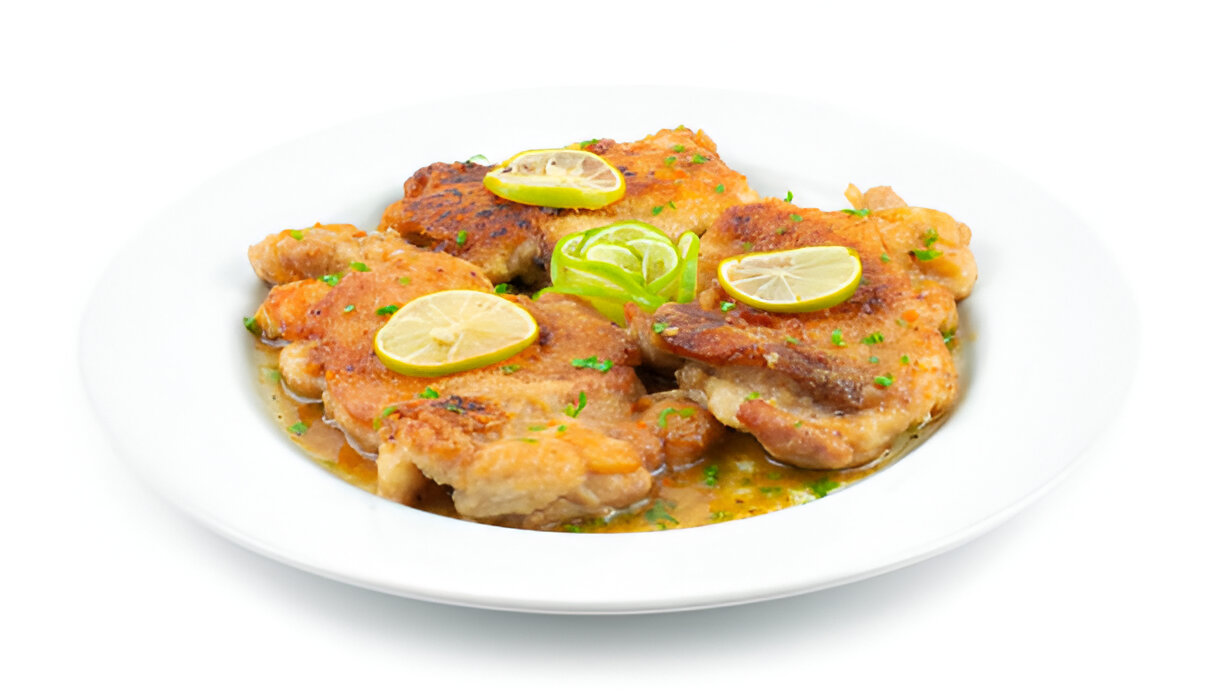
What is Chicken Francese?
Chicken Francese is basically chicken breasts that are pounded thin , coated in flour , dipped in beaten eggs , and then pan fried till they get a golden crust . After the chicken is done , it sits in a sauce of lеmon juice , white wine and chicken broth . The mix makes a bright , slightly tangy sauce that wraps around the chicken just right .
The magic comes from just a few ingredients: chicken , eggs , lеmon juice and white wine . The chicken gives you protein , the egg layer adds crunch , and the sauce of lеmon and wine brings a fresh zing .
Comparison with Other Italian Dishes
Chicken Francese is similar to some other Italian meals , but it’s got its own style . Take Chicken Piccata ; that one uses capers which give a salty pop . Or Chicken Marsala ; that one has mushrooms and sweet Marsala wine . Chicken Francese skips the capers and leans on the egg batter , making a lighter , more citrusy sauce .
Because there’s no capers and the sauce is a bit thinner , chicken Francese feels less heavy but still packs flavor .
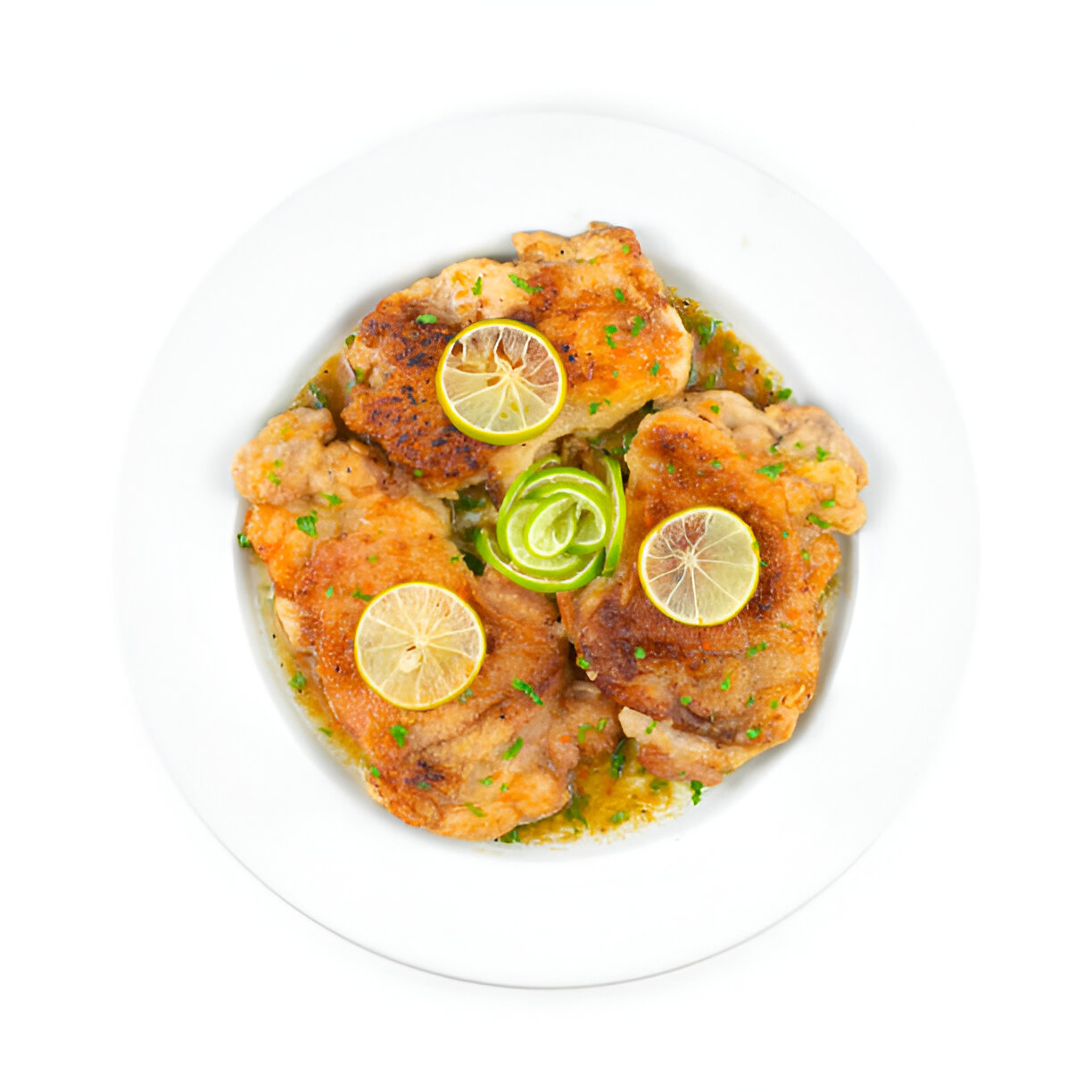
Ingredients for Chicken Francese
To make Chicken Francese you need simple stuff that’s likely in your kitchen or easy to find at the store :
- 2 large boneless , skinless chicken breasts
- 2 large eggs
- ½ cup all-purpose flour ( plus extra for dredging )
- ¼ cup fresh lеmon juice ( about 2 lemons )
- ¾ cup dry white wine
- ½ cup low-sodium chicken broth
- ¼ cup olive oil
- 2 tablespoons fresh parsley , chopped ( for garnish )
- Salt and pepper to taste
When you pick your ingredients , keep these in mind :
- Choosing the right chicken : Pick fresh , good quality chicken breasts .
- Importance of fresh herbs and citrus : Fresh parsley and real lеmon juice make the taste pop .
Preparation of Chicken Francese
Here’s a simple way to get Chicken Francese on your table :
1. Prepare the Chicken
Use a meat mallet to pound each chicken breast to about ½-inch thickness . Season both sides with salt and pepper .
2. Dredging Process
Set up two dishes : one with flour , the other with beaten eggs . Coat each chicken piece in flour , shake off extra , then dip in the egg mix till fully covered .
3. Cooking the Chicken
Heat olive oil in a large skillet over medium-high heat . When it’s hot , add chicken and cook 4-5 minutes per side , until golden and cooked through . Move the chicken to a plate and keep warm .
4. Making the Sauce
In the same pan , pour in white wine and lеmon juice to scrape up any brown bits on the bottom . Add chicken broth and let it simmer about 5 minutes till it thickens slightly . Put the chicken back in to soak up the sauce .
5. Finishing Touches
Sprinkle chopped parsley on top before serving . This adds a fresh green color and a hint of herb taste .
Serving Suggestions
Here are some sides that go well with Chicken Francese :
- Pasta : Serve over linguine or angel hair tossed lightly in olive oil or lеmon sauce .
- Garlic Bread : A juicy slice of garlic bread soaks up extra sauce .
- Salad : A simple green salad with vinaigrette balances the richness .
For a nice look , drizzle some sauce on the plate , then lay the chicken on top and add a lemon slice and parsley sprig .
Frequently Asked Questions
What is the difference between Chicken Francese and Chicken Piccata?
Chicken Piccata has capers for a salty kick , while Chicken Francese skips capers and uses an egg batter for a lighter texture .
Can Chicken Francese be made gluten-free?
Yes . Swap the regular flour for a gluten-free flour or cornstarch when you dredge the chicken .
How long does Chicken Francese last in the refrigerator?
It can stay good in an airtight container for up to 3 days . Warm it up gently before you eat .
What wine is best to use for Chicken Francese?
Dry white wines like Sauvignon Blanc or Pinot Grigio work great to bring out the flavors without making it too strong .
Can I use chicken thighs instead of breasts?
Sure ! Thighs give a richer taste , but they may need a bit more cooking time to be done all the way through .
Tips for Perfecting Chicken Francese
To nail this dish every time , try these :
- Cooking tips : Make sure the chicken is all the same thinness so it cooks evenly .
- Common mistakes to avoid : Don’t overcook or the chicken will dry out . Season well so it’s never bland .
- Suggestions for variations : Try adding thyme or rosemary , or use shrimp or salmon instead of chicken .
Nutritional Information
Here’s a quick look at what you get :
- Overview of health benefits : High in protein and gets vitamins from fresh lеmon and herbs .
- Breakdown of calories : About 350-400 calories per serving , depending on how much oil and wine you use .
- Tips for making it a healthier dish : Use less oil and try whole-grain or gluten-free flour .
Conclusion
Chicken Francese is a great example of Italian-American cooking . It’s simple to make yet feels fancy , with a crispy chicken and bright sauce that everyone will love . Whether it’s a busy weeknight or a special dinner , this recipe brings warmth and style to your table . Go ahead and give it a shot — your family and friends will be impressed .
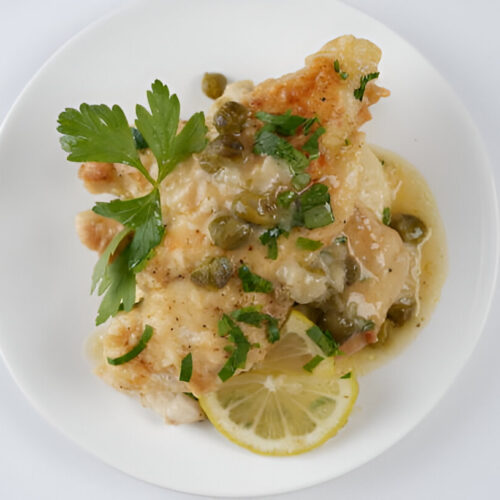
Chicken Francese
Equipment
- 1 large skillet
- 1 shallow dish
- 1 mixing bowl
- 1 whisk
- 1 meat mallet or rolling pin for flattening chicken
- 1 tongs or spatula
- 1 paper towels
Ingredients
- 4 pieces boneless, skinless chicken breasts About 1.5 lbs total.
- 1 cup all-purpose flour For dredging.
- 3 large eggs
- ¼ cup grated Parmesan cheese
- 1 teaspoon salt
- ½ teaspoon black pepper
- ¼ cup olive oil For sautéing.
- ½ cup chicken broth
- ¼ cup fresh lemon juice About 2 lemons.
- ¼ cup unsalted butter (½ stick).
- as needed garnish chopped parsley For garnish.
Instructions
- Begin by preparing your chicken breasts. Place one breast between two pieces of plastic wrap and gently pound to about ½ inch thickness using a meat mallet or rolling pin. Repeat for the remaining breasts.
- In a shallow dish, mix together the all-purpose flour, salt, and pepper.
- In a mixing bowl, whisk together the eggs and grated Parmesan cheese until well combined.
- Heat the olive oil in a large skillet over medium heat.
- Dredge each chicken breast in the flour mixture, coating both sides. Shake off any excess flour, then dip into the egg mixture, ensuring full coverage.
- Carefully place the coated chicken breasts in the hot skillet and cook for 3-4 minutes on each side, or until golden brown and cooked through. You may need to do this in batches if your skillet is not large enough.
- Once cooked, transfer the chicken breasts to a plate and cover to keep warm.
- In the same skillet, add the chicken broth and lemon juice. Bring to a simmer, scraping up any browned bits from the bottom of the skillet.
- Stir in the butter until melted and well combined, forming a rich sauce.
- Return the cooked chicken to the skillet, spoon some sauce over each piece, and cook for an additional minute to heat through.
- Garnish with chopped parsley before serving. Serve with the remaining sauce over the chicken.

